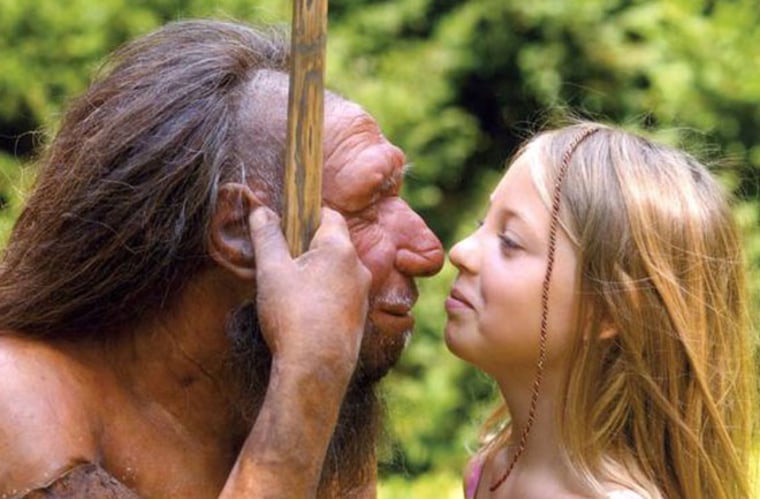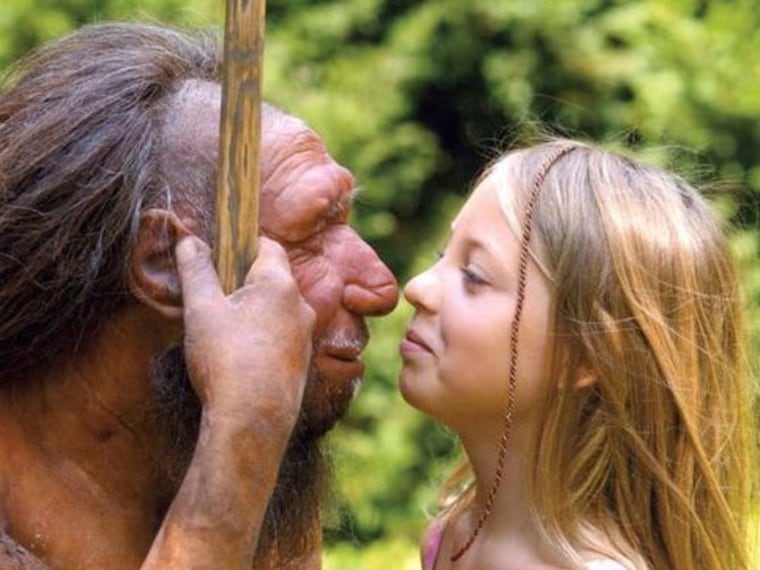
Neanderthals, like modern humans, probably communicated among themselves and with others using tonal languages.
New research, published in the journal Frontiers in Language Sciences, presents strong evidence — genetic, fossil, archaeological and more — that modern speech and language existed among Neanderthals, Denisovans (a Paleolithic type of human), and early members of our own species.
“Modern humans and Neanderthals and Denisovans are very similar genetically, and there are indications of interbreeding as well, strengthening this similarity,” lead author Dan Dediu told Discovery News, explaining that a gene involved in language and speech, FOXP2, is present in all three groups.
Photos: Faces of our ancestors
Neanderthal genes also suggest that the stocky yet brainy individuals possessed tonal languages, since there is an association between tone and two of their genes involved in brain growth and development.
Dediu is a senior investigator in the Language and Genetics Department and is group leader for a project called "Genetic Biases in Speech and Language" at the Max Planck Institute for Psycholinguistics.
In addition to outlining the DNA evidence, Dediu and colleague Stephen Levinson explain that Neanderthals possessed a humanlike hyoid bone, which is involved in speech production. Neanderthal ear bones further appear to have evolved for hearing speech in addition to other sounds, just as ours have.
News: Neanderthals lacked social skills
Symbolism ties to language, since sounds and words represent specific concepts, and it appears that Neanderthals were big on both symbolism and culture.
“Recent discoveries and reinterpretation of the Neanderthal archaeological record support its capacity for symbolic culture (including their) complex toolkit, complex social life and its capacity to persist in the harsh and fluctuating western Eurasian climate of the time,” Dediu said.
The researchers believe modern speech and language first emerged in Homo heidelbergensis, an extinct species of the genus Homo that lived in Africa, Europe and western Asia starting at least 600,000 years ago and possibly much earlier than that. This species might have been the common ancestor of Homo sapiens and Neanderthals.
Dediu and Levinson's work counters the theory that very few genetic changes resulted in the acquisition of the capacity for language. Instead, the scientists hold that genes associated with language and culture co-evolved.
"The basic idea," Dediu explained, "is that cultural change is not simply an effect of a better genetic background; culture does not have to wait for biology change, but culture generates new selective pressures to which our biology must adapt, changes in biology that might allow new cultural changes in a co-evolutionary cycle."
Neanderthals: Extinction by BBQ?
The evolution of lactose tolerance and changes to our immune and digestive systems due to farming are all examples.
As for when an individual of any species first communicated in a complex way via sound, it’s possible the sound was a whistle, Mark Sicoli, an assistant professor in Georgetown University’s Department of Linguistics, told Discovery News. Sicoli studies whistled speech still used in parts of Oaxaca, Mexico.
"Hypothetically, whistled speech could be as old as the earliest languages," Sicoli said, adding that it could even have been a component of proto-language — the precursor of human language used by the earlier hominid species.
Since Neanderthals and some humans out of Africa interbred and otherwise spent time together, we could retain aspects of Neanderthal communication that persist to this very day.
"If our proposal is correct," Dediu concluded, "then we might not only carry some Neanderthal genes in our own genomes as traces of our past encounters, but also our languages might as well preserve some faint signature of their languages as well, but until rigorous testing is attempted, this must remain pure — even if exciting — speculation."
More about Neanderthals:
- How sex with Neanderthals made us stronger
- Neanderthals were doomed before humans arrived
- Flash interactive: Before and after humans
Copyright 2013 Discovery Communications LLC
